article
At the table with the Romans
Seven Roman-inspired dishes to try
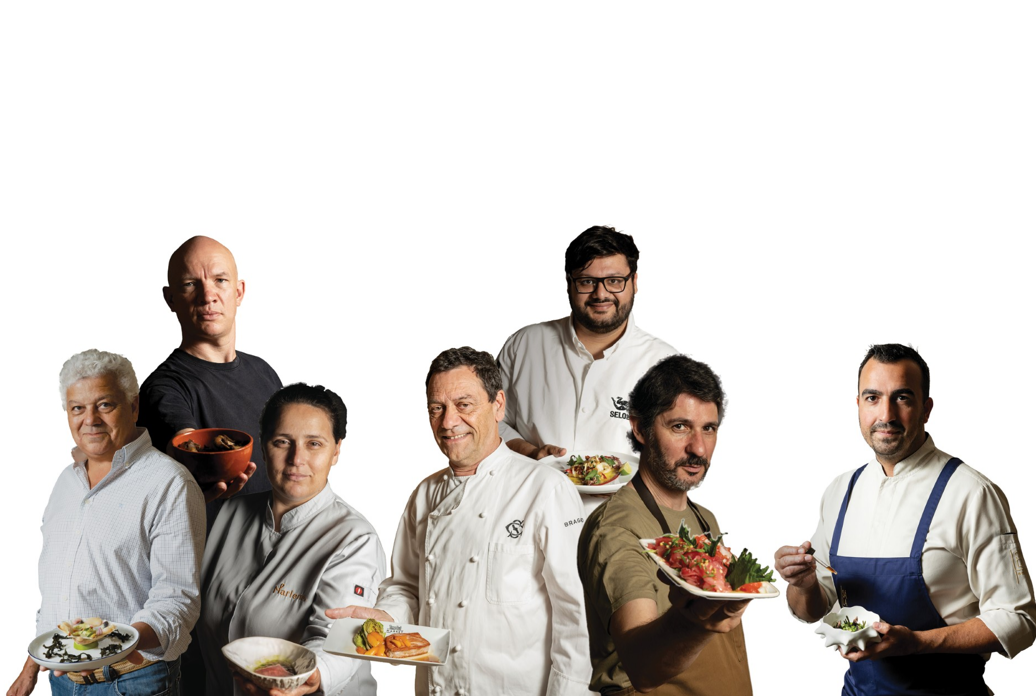
What if, for a week, you could go back in time and eat like a Roman? According to records that have survived over the centuries, the Romans ate mainly fish, olive oil, spices, dried fruits, honey and aromatic herbs. Garum (fermented fish sauce) was also an essential product, used as a flavor enhancer. Based on this assumption, the challenge was launched - to several restaurants, chefs and hospitality schools - to create a gastronomic itinerary inspired by Roman flavors.
Between July 12 and 21, Lisbon hosts the gastronomic week Lisboa Romana, À Mesa com os Romanos, (At the Table with the Romans), but the event takes place simultaneously in Mafra, Sesimbra, Setúbal, Palmela, Vila Franca de Xira and Torres Vedras. We went to discover (and taste) the dishes of the restaurants that, in Lisbon, will recreate the flavors of Ancient Rome. The preparation was at the discretion of each chef, but we can say that they are all more than approved.
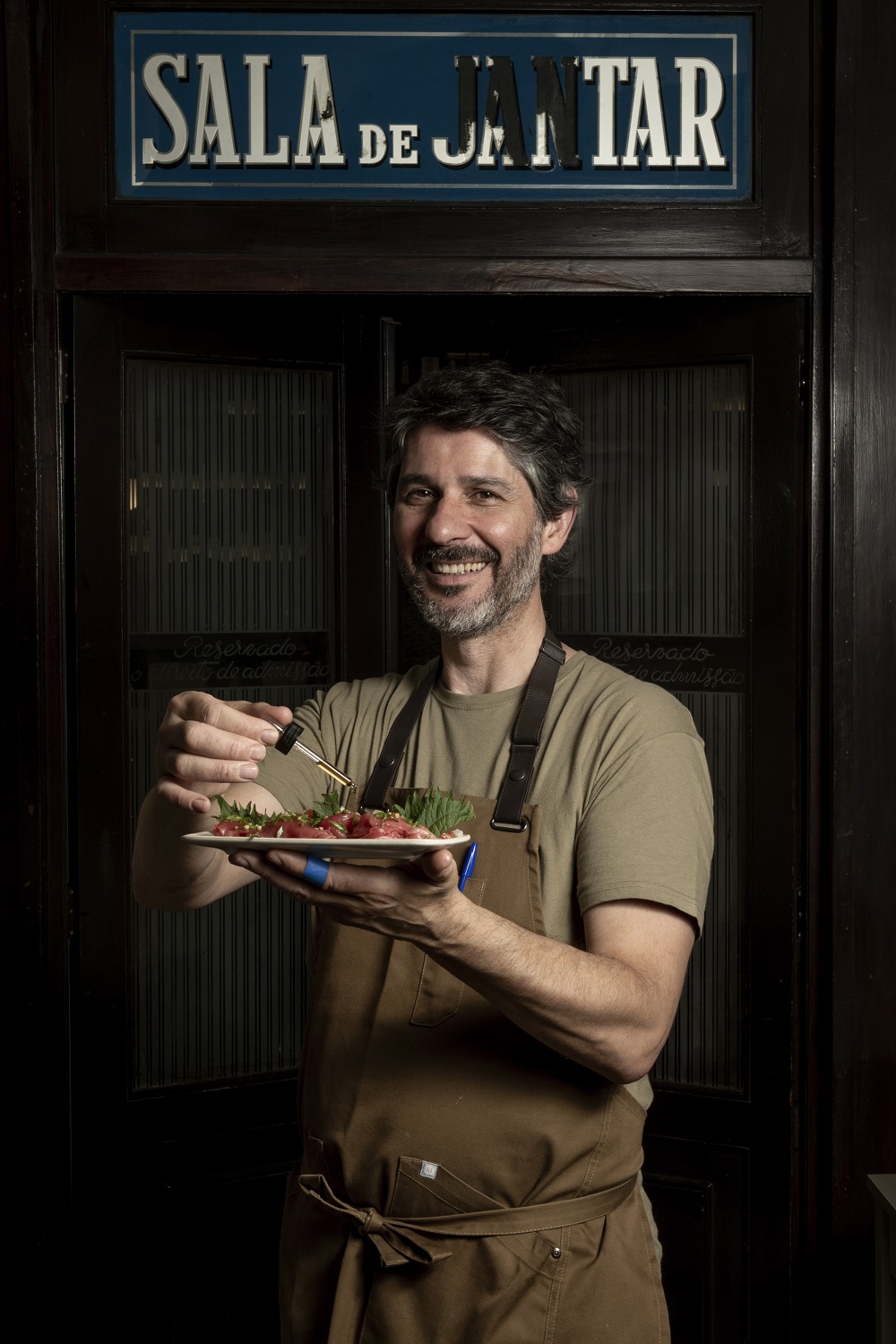
Chef Bertílio Gomes – Taberna Albricoque
Rua dos Caminhos de Ferro, 98A
Plate: Atum patudo perfumado com garum e tártaro de tomate biológico
In chef Bertílio Gomes’ space the focus is on Algarve specialties. Taberna Albricoque opened seven months before the pandemic and is currently suffering from the effects of construction work on Lisbon’s drainage plan. Despite these difficulties, the house is always full.
Roman gastronomy is a familiar theme for the chef who, at one time, had an ice cream shop in Tróia, in the district of Setúbal: “I even participated in several events to promote the Roman ruins [of Tróia]. One of the things I made was oyster ice cream.” The experience gave him strength: “I didn’t need to do much research because I’ve been serving Romans for many years, I already know them inside out”, he says jokingly.
Regarding the dish, “the inspiration had a lot to do with seasonal products, but there was also a concern to choose ingredients that everyone likes. Garum, in itself, is not a very attractive thing, not everyone knows it. Hence the importance of associating it with tuna, which is a very consensual fish.”
One of the premises of Taberna Albricoque is the rotation of dishes, so the idea will not be to keep the dish on the menu for a long time, so the best thing is to hurry up and try it.
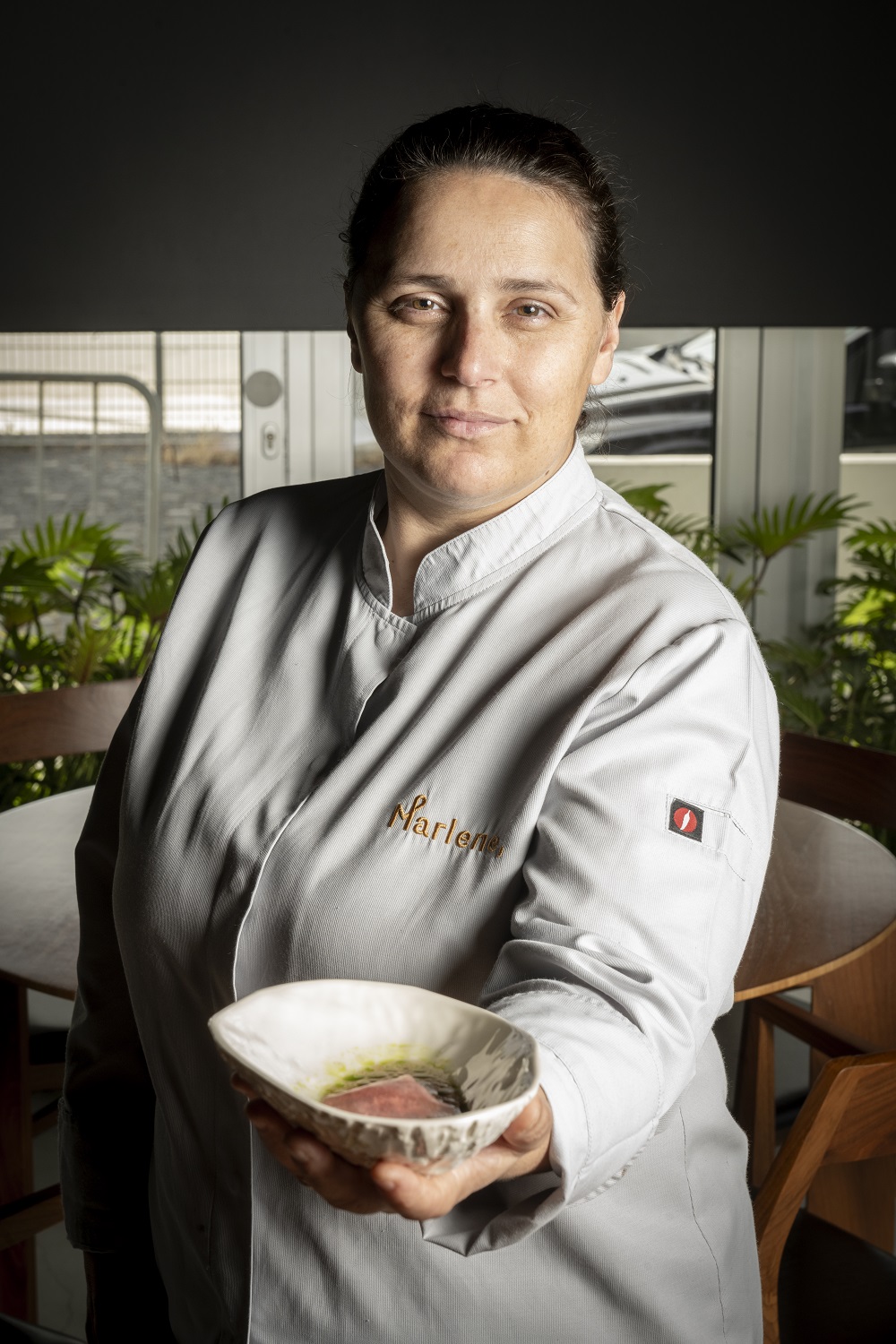
Chef Marlene Vieira – Marlene
Av. Infante D. Henrique, Doca do Jardim do Tabaco. Terminal de Cruzeiros de Lisboa
Plate: Atum com escabeche e garum de sardinha
When she received the invitation to participate in this gastronomic festival, chef Marlene Vieira soon knew that the garum would have to be present. In this dish, the important thing was to “balance the depth of flavors. It is based on escabeche, which was a method of preserving fish used by sailors on the high seas. I wanted to bring these two universes together – escabeche and garum – and the result is incredible.”
Familiar with this product of Roman origin, which she uses in other dishes, she says that when people try it, “they feel something very special, it has a lot of Portugueseness. I’m a little addicted to the use of garum due to the depth it gives to the flavors”, she confesses. The chef didn’t need to think much about choosing the dish, as it is part of the restaurant’s menu: “every now and then the protein is varied. Instead of tuna, we use mackerel.”
When asked which other dish she would like to try, she doesn’t hesitate: “I’m convinced that they will all be good dishes”, she says. Regarding her tuna with escabeche and sardine garum, she guarantees that whoever tries it “will never forget the experience”. We confirm!
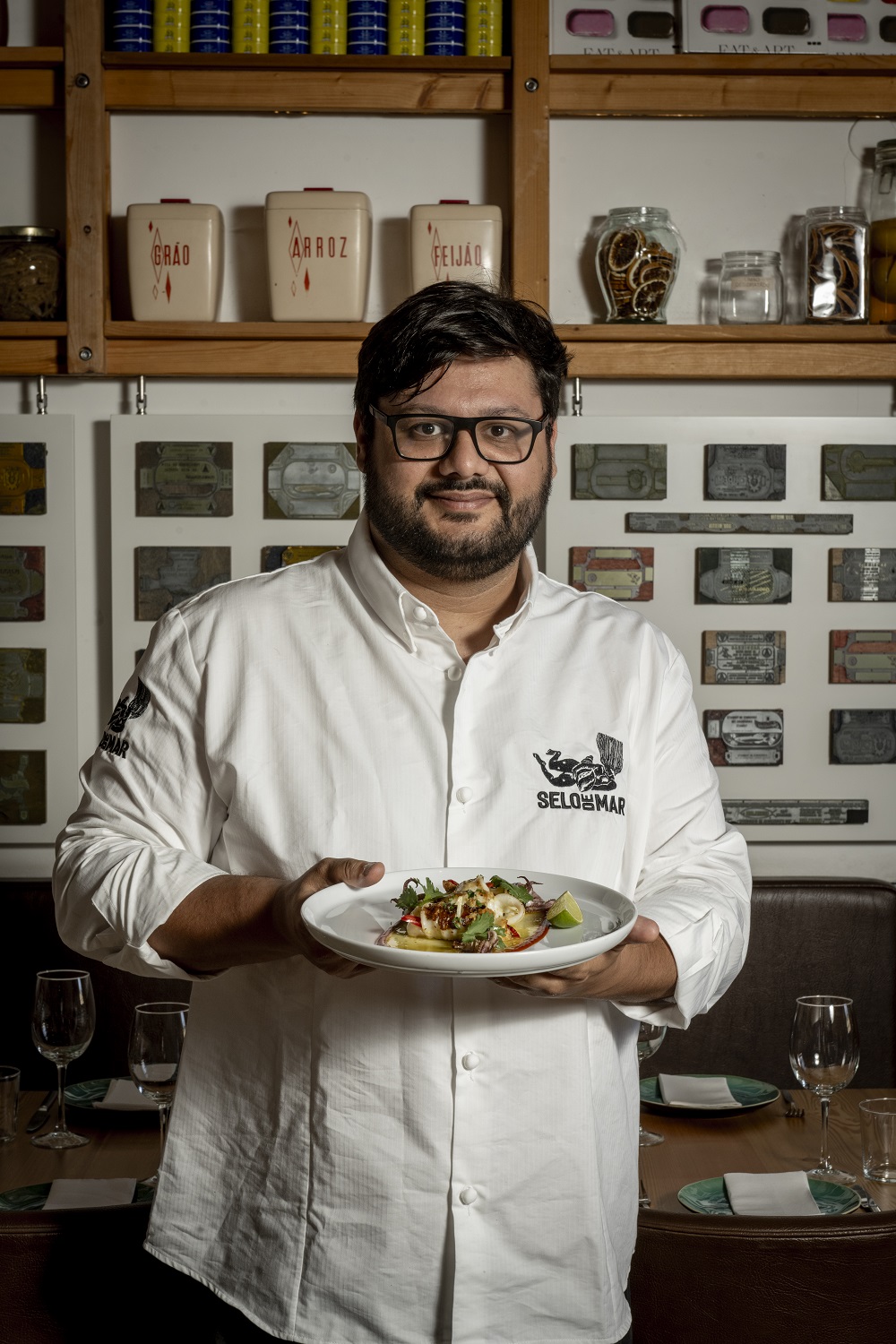
Chef Pedro Almeida – Can the Can
Terreiro do Paço, 82/83
Plate: Lula dos Açores, manteiga, coentros, molho de pimento assado com garum de cavala
Can the Can opened its doors in 2012, with the aim of promoting the national canning industry. At the same time, there is the Selo de Mar research project, which studies and rescues fish conservation techniques. About six years ago, he began researching old recipes to develop new garum formulas.
According to chef Pedro Almeida, “Selo de Mar is one of the largest producers in the world and the only one in Portugal”. The passion for this precious sauce is noticeable when we enter the restaurant. It is impossible not to notice the variety of jars available: sardines, mackerel, tuna, oyster, lily, swordfish, octopus, grouper, grouper and tuna, cuttlefish, needlefish and red mullet.
In the dish that the chef conceived for this Roman week, the garum shines “in the roasted pepper sauce, in the butter, but it is also used to brush the squid”. Recently, Selo de Mar created a dessert version made from bee pollen.
When you go to Can the Can, don’t forget to try the Abade Priscos do Mar Pudding, a version made with muxama (sea ham), which has salted caramel finished with garum.
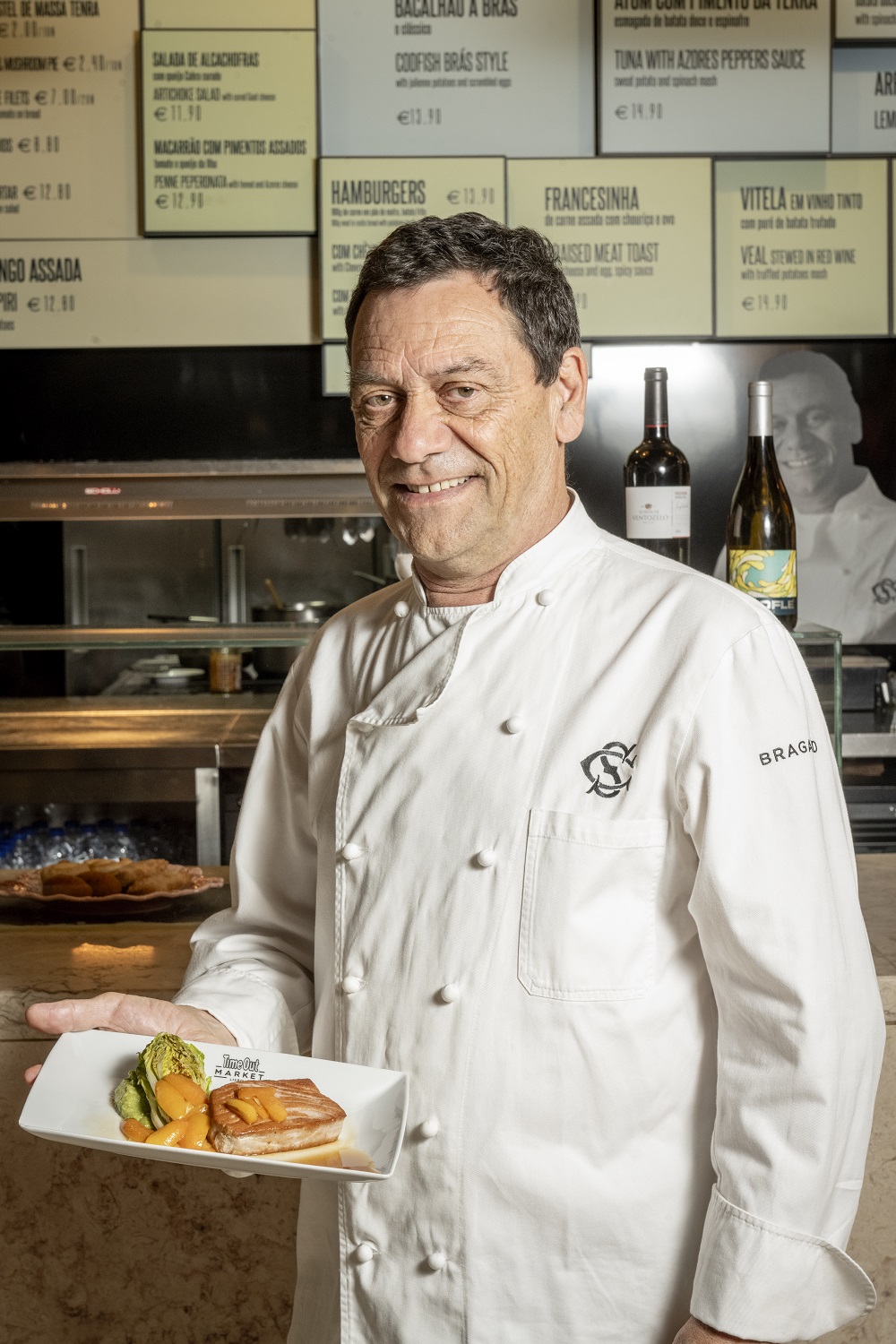
Chef Miguel Castro e Silva – Miguel Castro e Silva
Mercado da Ribeira – Av. 24 de Julho
Plate: Atum com citrinos e garum
Located in Mercado da Ribeira since 2014, the year in which several restaurants were set up there, the space run by chef Miguel Castro e Silva focuses on traditional Portuguese food.
When he was invited to participate in this gastronomic week, he immediately decided that the starting point in creating the dish could only be the garum. Produced by Selo de Mar, the “product is of extraordinary quality”, he guarantees.
Until arriving at the latest version of this dish, he tried several approaches: “it made sense to associate tuna with citrus, which are flavors that have everything to do with Ancient Rome. I serve it with mashed avocado and lightly toasted romaine lettuce with a sauce made with vegetable broth and garum.”The chef did some research – namely through the book by Apicius, a Roman gastronome from the 17th century. I, but he had already done intense research work years before, when he was invited by the História channel to recreate Christ’s last supper.
Castro e Silva likes this creation so much that he wants it to stay on the menu for some time. We are also rooting for this to happen!
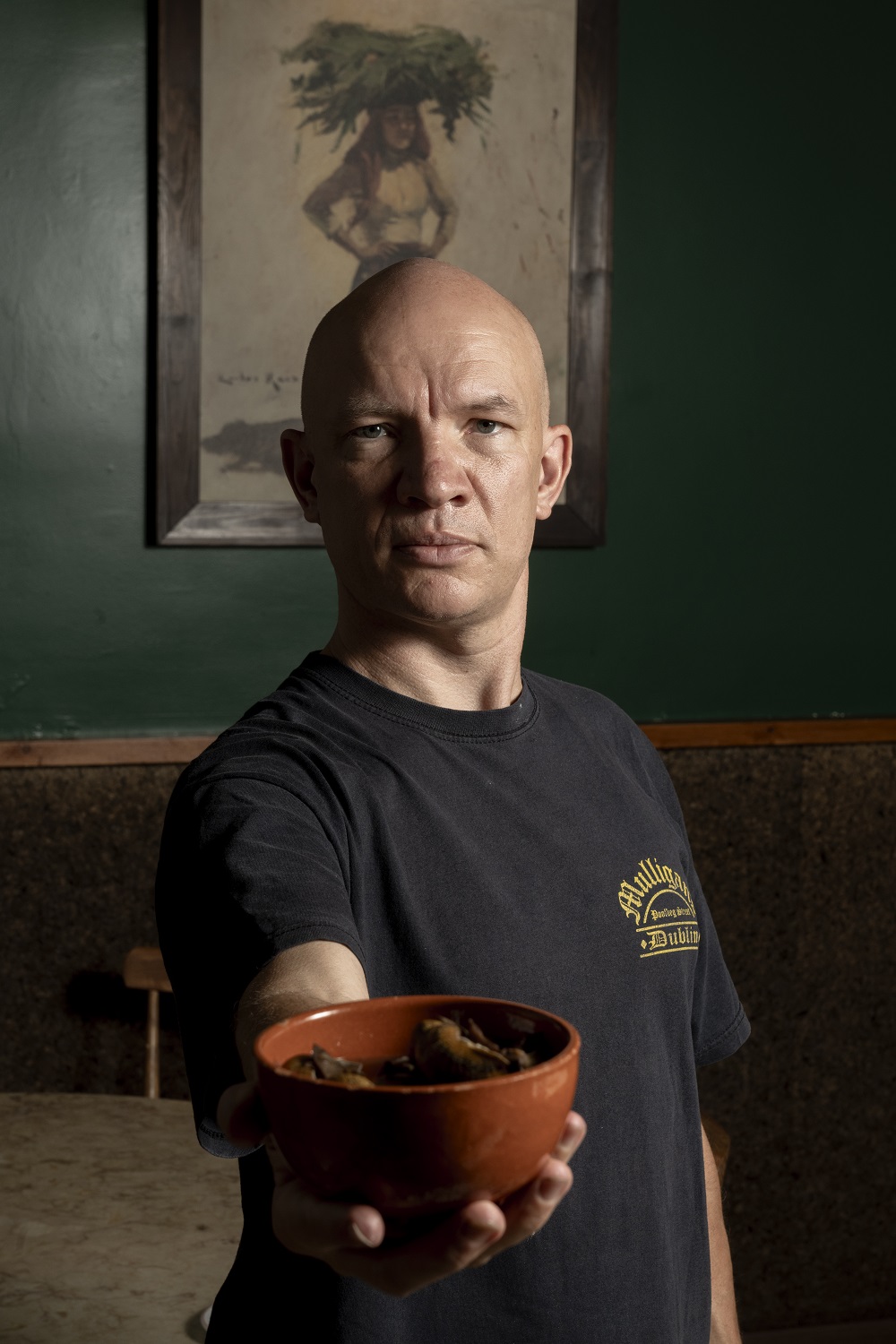
Chef Gareth Storey – Antiga Camponesa
Rua Marechal Saldanha, 25
Plate: Caracóis, caldo de Aipo-dos-Cavalos de Monsanto, manteiga de Hallec
“I don’t care what people like to eat, I just cook what I like” says, without any problems, Irish chef Gareth Storey. “It would be very strange to cook something I don’t like. I prepare the menu and the customers decide whether they approve or not. To this day it has worked.”
Working at Antiga Camponesa since its opening in October 2022, the chef is very demanding: “if we only give people what they want, we will only have burgers, pizzas and sushi on the menu”.
He spent ten years in France, and it was under the influence of his wife – French, but with a connection to Portugal – that he came to work in Lisbon. “Compared to Paris, Lisbon is a paradise, the people are friendly”, guaranteeing, with a laugh, that he is here to stay.
Regarding the Roman dish, he didn’t do any intense research, he just used “instinct and imagination. It made perfect sense to me to imagine the Romans eating snails and drinking wine.” One of the house’s policies is to use seasonal products, so this dish will be on the menu as long as there are snails.
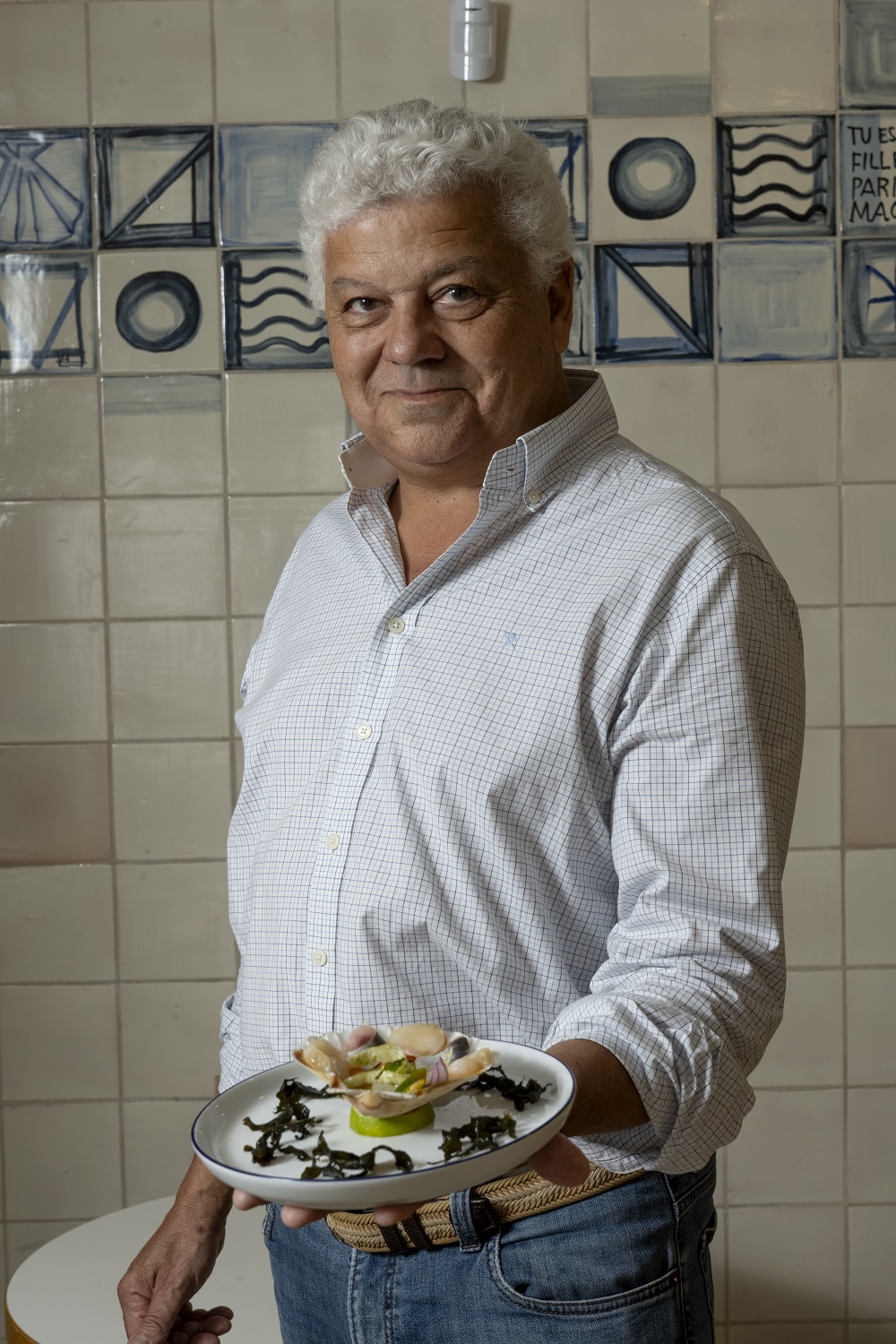
Chef consultor André Magalhães – Vieira Café
Praça das Amoreiras, 56
Plate: Vieira e sardinha, garum alfacinha
On the ground floor of Arpad Szenes-Vieira da Silva Foundation we find Vieira Café, which recently reopened with a new concession and consultancy from chef André Magalhães. In this new phase of the space, the chef was challenged to create dishes that link culture and gastronomy. The decoration itself plays with the name of Maria Helena Vieira da Silva and the scallops present in the tiles designed by Manuel Cargaleiro (from the painter’s originals).
For the dish of the Roman week, André Magalhães chose to use the scallop, a “bivalve that, according to archaeological research, existed in the Tagus in Roman times”. Another striking element is the garum alfacinha (made in-house), as well as the lettuces “appreciated since Roman times” and sardines, “very typical of Lisboa”. The dish also has a decorative (and edible) element: algae from the Tejo River.
The idea is to recreate Roman flavors but, to do so, “there is an element of fantasy that we have to keep in mind. We are revisiting flavors that could have been common two thousand years ago”, he says. If everything goes as expected, the dish will be kept on the menu.
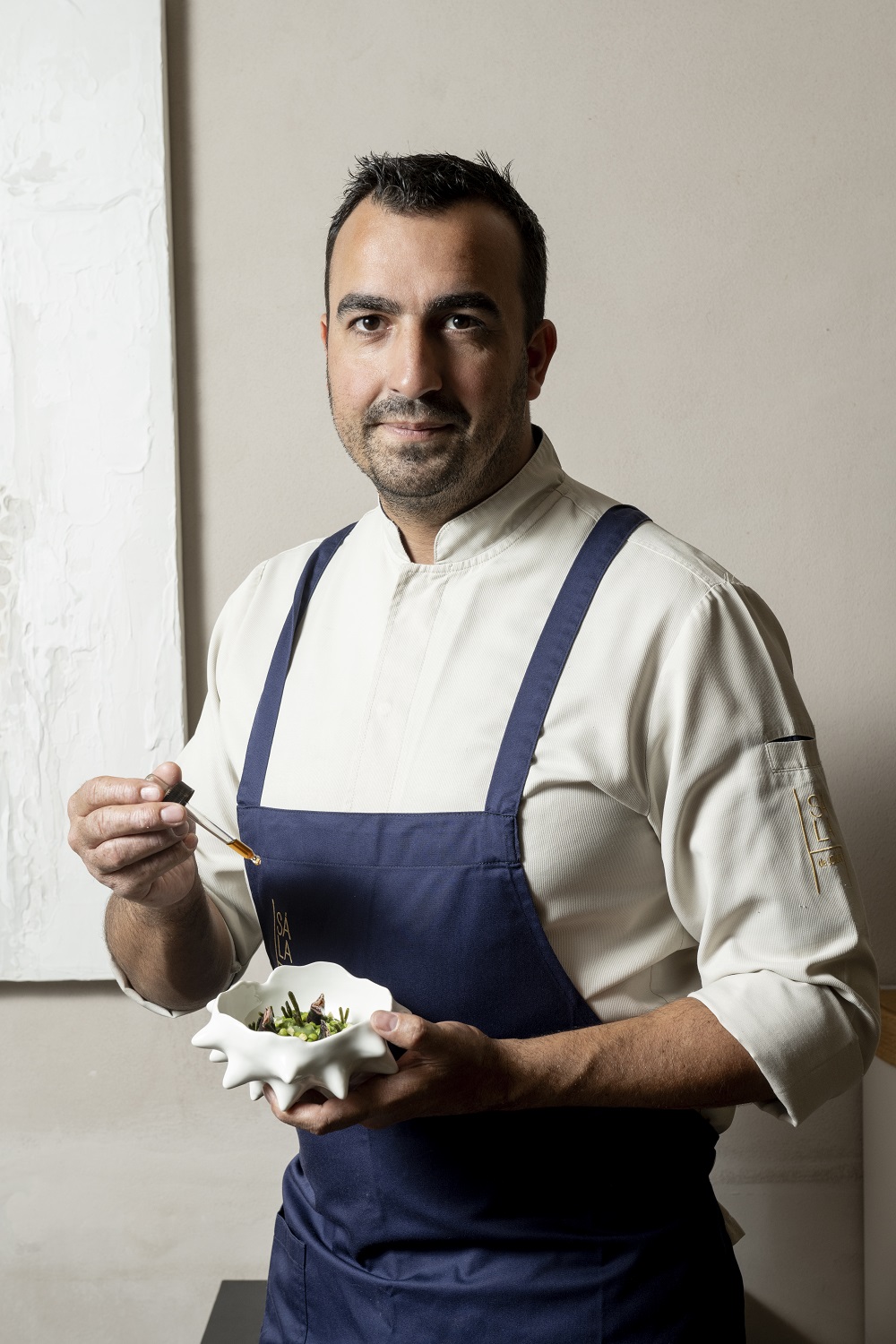
Chef João de Sá – Sála de João de Sá
Rua dos Bacalhoeiros, 103
Plate: Cuscos, coentrada e garum de sardinha
Sála is located in the heart of Baixa Pombalina. Since it opened five and a half years ago, the restaurant has had its hands full. If demand is a clear sign that the service is good, what can we say about the Michelin star it received this year? For chef João Sá, it is “a recognition that reflects the work of these five years”.
At Sála, we mainly find dishes linked to national cuisine and local products. For this specific dish, the idea was to find “a balance between the history of the city of Lisbon and the influence left by the Romans”. The dish already existed on the menu, but, to tie everything together, we used the sardine garum produced by Selo de Mar.
This is, in fact, a product widely used in this restaurant, with a curious fact: here it’s the customer who chooses the type of garum to put on the plate: “we give it to smell and taste, we explain what it is and let the customer decide. The most popular are sardines and mackerel. There are people who already know it, others who don’t know it and who are delighted and also people who don’t like it at all. There’s a taste for everything,” he says.